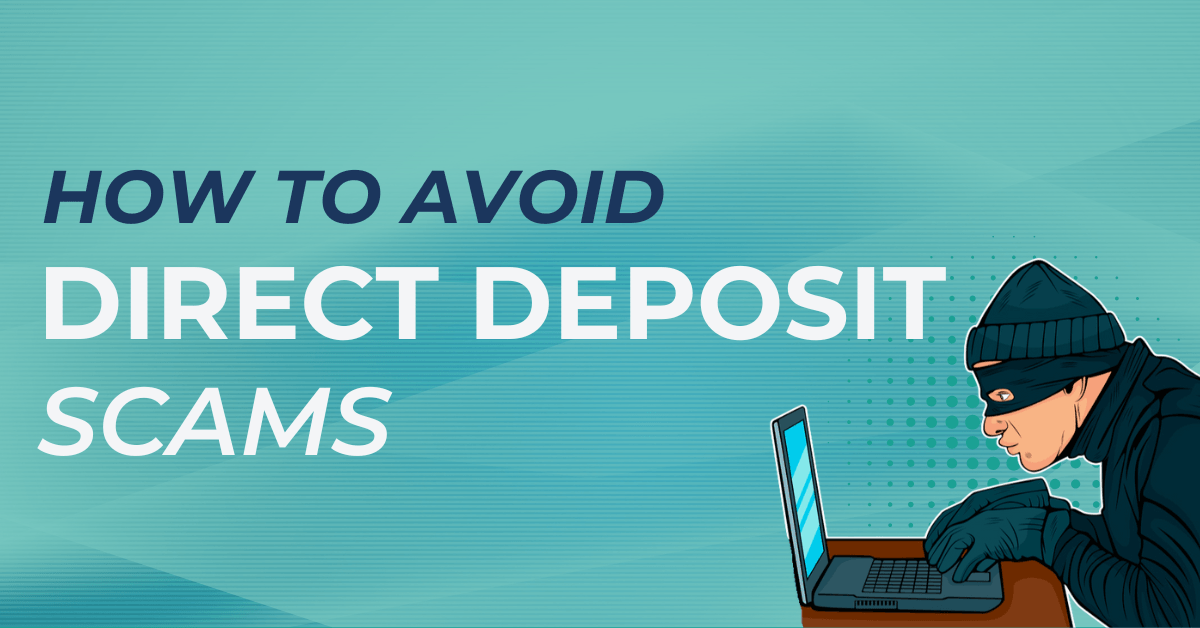How to Avoid Direct Deposit Scams
February 26th, 2025 | 3 min. read

Your payroll deadline is just 30 minutes away. You’re wrapping up the final details when an email arrives from your hardest-working employee. They urgently request a change to their direct deposit information, insisting their upcoming paycheck must go to a new account.
Pressed for time and eager to help, you quickly make the update and submit payroll with only minutes to spare.
The problem? That email wasn’t actually from your employee. A cybercriminal just stole their paycheck, and you may now be on the hook for paying their wages twice.
Unfortunately, this type of scam is becoming increasingly common, targeting businesses that lack strong payroll security protocols. Because once a direct deposit is sent to a fraudulent account, recovering the funds can be next to impossible.
So, how can you protect your business? Implementing at least two of these three security measures can significantly reduce your risk:
- Give employees direct control over deposit changes
- Require confirmation through a separate medium
- Use a physical ACH update form
Let’s break down each of these protocols and how they help prevent payroll fraud.
Empower Your Employees to Take Charge of Their Own Direct Deposit
One of the best ways to prevent direct deposit fraud is to shift the responsibility to your employees. Many outsourced payroll providers offer employee self-service portals, allowing workers to log in and update their direct deposit details themselves.
How This Protects Your Business
By directing employees to make changes through a verified system, businesses eliminate the risk of falling for fraudulent email requests. Instead of processing deposit updates manually, payroll teams can simply guide employees on how to navigate the system themselves.
Best Practices for Implementation
If you implement this approach, be mindful of how instructions are shared. Avoid sending sensitive details via email, as cybercriminals could intercept them and use them to gain unauthorized access. Instead, provide step-by-step instructions through a secure internal platform or walk employees through the process in person or over the phone.
Want to learn more about how a payroll software with an Employee Self-Service can make your operations more efficient? Check out this article.
Confirm Requests Through a Separate Communication Channel
Scammers rely on deception. If they can trick payroll teams into believing a direct deposit request is legitimate, they can easily divert an employee’s paycheck to their own account. That’s why verifying all payroll update requests through a different medium is a critical safeguard.
If an employee emails you requesting a direct deposit change, don’t rely on that email alone. Pick up the phone and call them to confirm the request. If your company uses an internal messaging system like Slack or Microsoft Teams, that can serve as another method of verification.
This extra step functions like manual two-factor authentication, ensuring you’re speaking to the real employee, not a scammer. If you want to take it a step further, you can also require employees to complete deposit changes themselves through a secure payroll portal, further reducing risk.[fl_builder_insert_layout id=9297]
Require a Physical ACH Update Form for Extra Security
For companies that want maximum protection, a direct deposit change should require a signed ACH update form, submitted in person. When an employee hands over the form physically, there’s no question that the request is legitimate.
What if in-person submission isn’t possible?
Of course, in today’s workplace, in-person submissions aren’t always practical—especially for remote teams. If an employee can’t submit the form in person, a scanned copy with a signature can serve as an alternative. Just be sure the form is stored securely and not sent as an unsecured email attachment, which could make it easier for scammers to exploit.
While this method may add an extra step, it provides the strongest level of verification and ensures payroll changes are coming directly from employees—not cybercriminals.
Invest in Payroll Security to Protect Your Business
Payroll fraud is a growing risk, but with the right safeguards in place, it’s completely preventable. By empowering employees to update their own banking details, requiring verification through multiple channels, or implementing a signed ACH update form, you can drastically reduce your exposure to payroll scams.
Whichever protocols you choose to implement, make sure your team knows about them and knows they are in place to keep their money safe. Yes, it is inconvenient to fill out a physical form and call your employer to make a change, but convenience comes at the cost of security. There is no better way to show that you care about your employees than investing in the security of their paycheck.
But security measures only go so far if your payroll provider isn’t proactive in helping you prevent fraud. Are they just processing transactions, or are they helping protect your business?
If you’re relying on a payroll vendor that only pushes paper,
it might be time to find a true payroll partner—one that prioritizes security, compliance, and your team’s financial well-being. Read: Why Settle for a Payroll Vendor When You Can Have a Payroll Partner?
Topics: